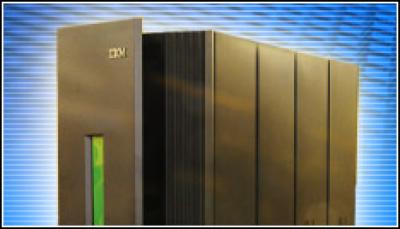Server Growth Continues With Demand For Unix And Mainframes

IDC has a recorded a healthy rise in demand for non-x86 servers from the likes of HP, IBM and Oracle
Hewlett-Packard and IBM continue to occupy the top two slots (first and second respective) in terms of server revenue during the first quarter, according to market research firm IDC.
And it seems that these revenue gains were fuelled in part by growing demand for high-end non-x86 systems.
In figures released 24 May, IDC analysts noted that while the x86 server market continued its steady revenue growth, non-industry-standard systems – including RISC, EPIC (based on Intel’s Itanium processor) and CICS – also saw significant increases in revenue, giving further boost to not only HP and IBM, but also Oracle, which passed the one-year anniversary of its $7.9 billion (£4.9bn) acquisition of Sun Microsystems and its SPARC/Solaris hardware portfolio.
Unix/Mainfr ame Demand
ame Demand
Revenue for non-x86 server jumped 12.3 percent over the same period last year, to $4 billion (£2.5bn), marking the second consecutive quarter of growth for the space and the first time in two years that revenue in the market grew faster than the overall server space, according to IDC analysts.
The growth was driven in large part by greater demand for Unix servers and IBM’s System z mainframe systems.
“The Unix server marketplace is seeing new market dynamics centred on technology refresh for mission-critical workloads, a new provider in Oracle, and a new product set across all of the top 4 Unix server vendors,” Jean Bozman, research VP of enterprise servers at IDC, said in a statement. “This segment was hard-hit in 2009 and 2010 during the economic downturn as customers deferred or delayed acquisition of midrange and high-end Unix servers. There is also continuing competition for enterprise workloads with non-Unix platforms. However, as IDC projected, there has been a return to growth in this segment in 2011, as customers’ servers are being refreshed to carry forward Unix-specific, mission-critical workloads.”
That was illustrated by the numbers. For Unix servers, Q1 was the first quarter in the past 11 quarters to show year-on-year revenue growth, increasing 12.5 percent over the same period last year. IBM, HP and Oracle all saw improvements in their Unix server revenue numbers, with worldwide Unix revenues growing to $2.6 billion (£1.6bn) and representing 21.8 percent of all quarterly server revenue.
Meanwhile, revenue for IBM’s System z servers running z/OS grew for the third consecutive quarter, jumping 41.1 percent over the first quarter in 2010, to $1 billion (£620m). It represents 8.8 percent of overall server revenue.
Server Growth
Overall server revenue worldwide jumped 12.1 percent over the same period last year, growing to $11.9 billion (£7.3bn) in the quarter. It was the fifth consecutive quarter of year-over-year revenue growth in the space. In addition, server unit shipments also grew, increasing 2.5 percent to 1.9 million units. That is the second highest first-quarter total ever reported, according to IDC analysts.
The good fortune hit every segment of the server space, from volume systems to mid-range and high-end servers.
“Meaningful enterprise infrastructure refresh occurred across all geographies in the quarter,” Matt Eastwood, group VP of enterprise platforms at IDC, said in a statement. “Although the public sector weakened, worldwide demand for servers across hosters, SMBs, and enterprise customers remained strong.”
Eastwood said the revenue growth in all three server segments – and among x86 systems, Unix servers and mainframes – was an indication that “heterogeneous systems remain critically important to customers addressing a wide range of workload needs in their data centres. As we moved into 2011, IDC predicted the technology refresh cycle would extend from volume- to value-oriented systems with somewhat longer planning horizons, and this is clearly happening.”
HP’s revenue grew 10.8 percent, thanks to higher demand for both its x86 ProLiant systems and high-end Integrity-based Itanium servers, IDC analysts said. HP had 31.5 percent market share for the quarter, while IBM was second with 29.2 percent. IBM also saw growing demand for its non-x86 systems, in particular its Power servers and mainframes. Dell came in third with 15.6 percent market share, followed by Oracle with 6.5 percent and Fujitsu with 4.8 percent. Fujitsu also was the only vendor in the top five to see a drop in revenue.
In addition, IDC also began tracking Cisco Systems, with its x86-based UCS (Unified Computing System). Cisco garnered a 1.6 percent market share, thanks in large part to its strength in x86-based blade systems.
